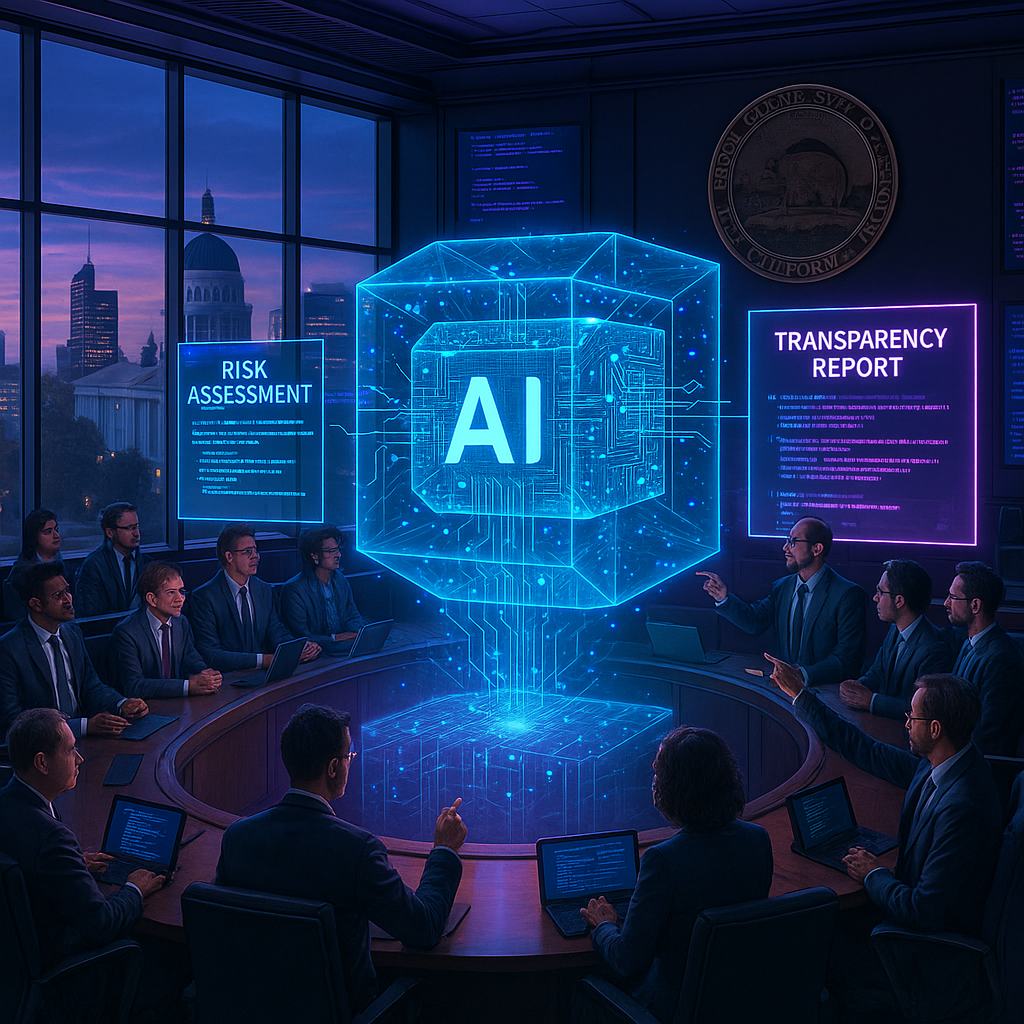Key Takeaways
- Transparency mandate targets AI’s “black box”: Developers are required to disclose high-level design intentions and potential impacts of new AI models.
- Sweeping scope covers frontier AI: The law applies to systems capable of independent reasoning, beyond familiar language generators or chatbots.
- Public input becomes a legal requirement: Companies must publish risk assessments and invite public commentary before major deployments.
- California sets a national standard: As the first U.S. state to legislate AI transparency at this scale, California’s law could shape policy far beyond its borders.
- Compliance deadline in 2025: AI developers operating in California have until January to fulfill the new disclosure requirements.
- Potential ripple effect for education and advocacy: Public disclosure clauses may empower universities, independent researchers, and tech-curious individuals to examine AI’s societal implications more closely.
Introduction
California lawmakers have established a bold precedent by passing the nation’s most sweeping artificial intelligence transparency law. Unveiled Thursday in Sacramento and set to take effect next year, this legislation aims to illuminate the “black box” at the heart of advanced machine intelligence. It compels creators to disclose design intentions and risks, mandates public input, and marks a transformative shift in society’s relationship with emerging technologies.
What California’s AI Transparency Law Requires
Companies that develop or deploy advanced AI systems in California must now publicly disclose their training methods, data sources, and potential societal impacts. The law, effective January 2025, specifically targets systems capable of generating text, images, audio, or video that could be mistaken for content created by humans.
Developers are mandated to conduct and publish detailed risk assessments before releasing new AI models. These assessments must address potential harms such as privacy violations, discriminatory outcomes, and the spread of misinformation.
Key requirements include:
Stay Sharp. Stay Ahead.
Join our Telegram Channel for exclusive content, real insights,
engage with us and other members and get access to
insider updates, early news and top insights.
 Join the Channel
Join the Channel
- Documentation of training data sources and collection methods.
- Clear labeling of AI-generated content.
- Regular audits of system performance and bias.
- Public disclosure of known limitations and risks.
These mandates aim to promote transparency and accountability as foundational principles for AI development.
Implementation Challenges and Industry Impact
The new transparency mandates demand substantial operational changes from major tech companies. Smaller startups and AI labs have raised concerns about the resources needed for comprehensive documentation and ongoing monitoring.
James Patterson, Chief AI Officer at Google, stated that the company supports transparency, but “implementing these requirements across complex systems will require careful consideration and substantial resources.” Other Silicon Valley AI developers have voiced similar sentiments.
Balancing innovation with oversight is now a central challenge. Companies must protect proprietary technology while meeting public disclosure obligations, navigating a complex regulatory landscape that redefines industry norms.
Philosophical and Societal Questions Ahead
Beyond logistics, the transparency law compels a deeper interrogation of what it means to understand AI systems as their complexity grows. As systems achieve human-like capabilities in certain domains, providing meaningful explanations becomes both a technical and philosophical puzzle.
Documenting AI systems’ “core design intentions” prompts questions about machine agency and human oversight. Dr. Elena Martinez, AI ethicist at Stanford, commented that “we’re not just asking what these systems can do, but what they should do, and how we can ensure they align with human values.”
These regulations ignite important discussions on the interplay between artificial and human intelligence. The challenge ahead lies in building frameworks for oversight over technologies that increasingly operate beyond human comprehension.
Global Implications and Policy Momentum
California’s strategy could serve as a model for other jurisdictions worldwide. The European Union’s AI Act and similar legislation in Canada and Japan share key features with California’s transparency requirements.
International experts suggest that this development signals a move towards global alignment on AI oversight. Dr. Yuki Tanaka of the Tokyo Institute of Technology remarked, “We’re seeing a convergence of regulatory frameworks that prioritize transparency and accountability.”
This trend underscores a growing global consensus on the necessity of AI governance. As California implements its new law, other states and countries may look to adopt similar standards, amplifying its international impact.
Conclusion
California’s pioneering AI transparency law marks a turning point. It obliges developers to confront the intentions and ramifications of their creations. Beyond state borders, the measure stands to influence how societies evaluate and manage AI’s advancing power and complex boundaries. What to watch: by January 2025, companies must comply with these requirements, as observers worldwide monitor the law’s rollout and its potential to shape global standards.
Stay Sharp. Stay Ahead.
Join our Telegram Channel for exclusive content, real insights,
engage with us and other members and get access to
insider updates, early news and top insights.
 Join the Channel
Join the Channel





Leave a Reply